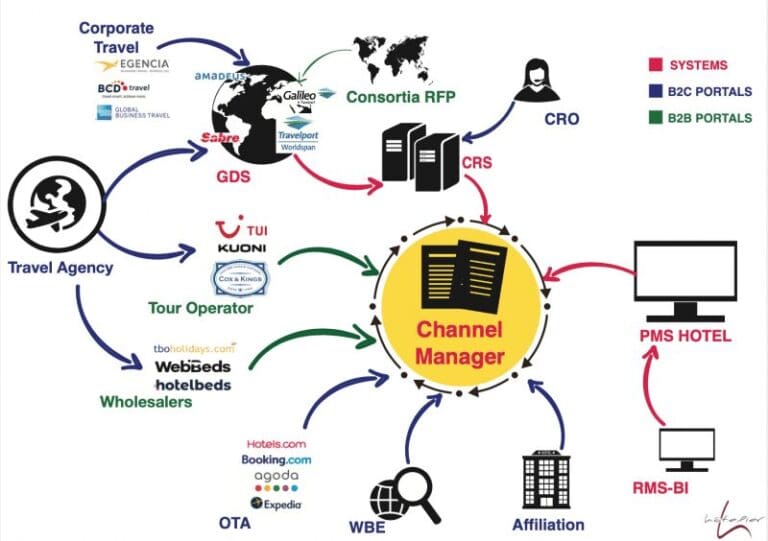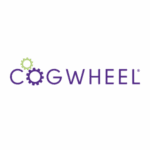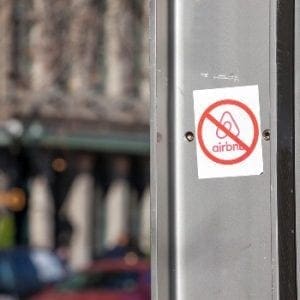In a previous article, we discussed the different distribution channels adopted by hotels and outlined the problem of rate disparity and the advantage of rate parity. This article will enhance your knowledge about rate parity from a practical perspective, by drawing and highlighting the different distribution channels, and by providing recommendations to avoid rate disparity.
previous article, we discussed the different distribution channels adopted by hotels and outlined the problem of rate disparity and the advantage of rate parity. This article will enhance your knowledge about rate parity from a practical perspective, by drawing and highlighting the different distribution channels, and by providing recommendations to avoid rate disparity.
Nowadays, it is difficult to have rate disparity with the most renowned OTAs since most hotels work with a channel manager. The only disparity that may arise occurs when a promotion is set on one and not on another distribution platform.
In fact, most of the disparities takes place in the B2B platforms and mainly when wholesalers (B2B), supposed to sell on a B2B basis, allow the rates to be leaked by third party OTAs (B2C), which then sell the wholesale rates to individuals. Moreover, these OTAs buying their rooms via the wholesalers may also cut into their own commissions to undercut the hotel’s rate to attract clients, which leaves the hotel with different online rates without having any way to control them. This created a big problem in the industry that pushed one of the largest wholesalers ‘hotelbeds’ to publicly announce a couple of month ago that they stopped working with booking sites that break hotel distribution rules.
The figure below allows us to identify both types of customer groups: B2B and B2C, with a detailed definition of the terminology of the different distribution channels to avoid confusion.

- GDS (B2B), or Global Distribution System such as Galileo, Sabre, and Amadeus, is a large computer network that passes inventory and rates for hotels to travel agents and travel sites. Other travel segments such as rental cars and airlines also use it. It is the main platform for the airline industry.
- CRO (B2C), or Central Reservation Office, is a system that allows reservation agents to receive reservation requests by phone and to handle them immediately. CROs display availability of hotels and allow reservation agents to easily and quickly find the suitable property for the client they have on the phone.
- Consortia (B2B), are associations or marketing organizations which link together small to medium sized independent travel agencies to leverage purchasing power and marketing opportunities. The consortia rate is negotiated between the hotels and travel agencies and is only available to contracted consortia.
- WBE (B2C), or Web Booking Engine, is an online application that allows you to choose from a wide range of travel products (hotels, air tickets, conference halls etc.) and book them on the Internet. The main advantage of a booking engine is that it provides an easy access to payment processes and purchase systems.
- Wholesaler, (B2B), is a company that operates as an intermediary between the travel product supplier and the retail travel agent in the marketplace. They sell rooms in bulk.
- TA, (B2C), or Travel Agent, is a licensed travel product retailer that provides travel information, reservations, and other forms of assistance to consumers and groups in making travel arrangements.
- Channel Manager is a cloud-based channel management solution, which enables you to manage your online distribution with ease from one place. It provides live two-way connection to each of your OTAs with a unique pooled inventory model.
- CRS, (B2B), or Central Reservation System, is a type of reservation software used to update and maintain information of a hotel pertaining to inventory and rates, so that hotels are able to manage guest reservations and the process around such reservations in real time.
These reservations are managed across a multitude of distribution channels such as the 3rd party booking websites, direct internet booking engines, the GDS, wholesalers and more. A CRS centralizes the data from the property management systems, distribution channels, call centers and phone reservation systems used across one or many properties.
Rate disparity affects your customer’s trust in your company and your bottom line. On the one hand, if rates on your own “Best Rate Guaranteed” website are more expensive than those available on OTAs’ websites, customers might lose their trust in your company and believe that OTAs are offering discounted prices. On the other hand, when OTAs offer lower rates on their sites than your rate on the brand.com site, there is no incentive for customers to book directly with you, despite the fact you are still paying commissions to OTAs.
To prevent or minimize rate disparity, it is critical that you monitor your rates across all of your distribution channels:
- Seek the advise of hospitality professionals to identify the leakage
- Invest in technology that improves your administrative efficiency as rate disparity occurs due to human errors.
- Be able to use this technology to keep track of your own daily rates, since you will want to make sure you comply with all of your distribution agreements.
- Take ownership of the contracts for the B2B platforms
- Implement a channel manager to avoid forgetting to revise OTA rates during an update, or to accidentally leave old rates on certain sites.
- Offer slightly lower rates on your own website in order to increase direct bookings. You may offer the same rate but with a supplement.

















